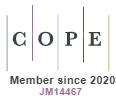Reducing carbon emissions from avoided deforestation in the Brazilian Amazon: an approach based on the Business-as-Usual (BAU) scenario
DOI:
https://doi.org/10.5585/geas.v11i1.19817Keywords:
Reduced emissions, Avoided deforestation, Business-as-Usual, Land use change.Abstract
Objective: Historically, Brazil's largest source of GHG comes from changes in land use, strongly correlated with deforestation in the Amazon, which can compromise the Reduced Emissions (RE) established in the Intended Nationally Determined Contribution presented in the so-called Agreement from Paris. This study aimed to analyze the Business-as-Usual scenario (BAU scenario), projecting the reduced CO2 emissions from avoided deforestation originating from Land Use Changes in the Brazilian Amazon.
Methodology: Estimates of RE values referring to the historical baseline of deforestation from 2006 to 2020. In addition, the projection of the BAU scenario is grounded on the linear regression model of RE data from 2021 to 2030.
Relevance: studies of deforestation scenarios are fundamental. Especially, this one consists of answering how emissions from deforestation would be configured if nothing changed in the future concerning the usual scenario or BAU scenario.
Results: in a pessimistic scenario with high deforestation rates, the BAU Scenario estimates would be: – 121.85 and – 271.31 MtCO2 in 2025 and 2030, respectively. Furthermore, the RE targets for the years: 2020 (154.7 MtCO2), 2025 (719 MtCO2), and 2030 (887 MtCO2) would be overestimated, contradicting the emission mitigation goals.
Conclusion: the main conclusion of the study is that in the context of the return of the high rates of deforestation in the Amazon, Brazil still has a great challenge to reach the desired levels of GHG emissions.
Downloads
References
Angelsen, A. (2008). Moving ahead with REDD: issues, options and implications. Indonésia: CIFOR.
Angelsen A., Brockhaus, M., Sunderlin, W. D. & Verchot, L. V. (2013). Análise de REDD+: desafios e escolhas. Indonésia: CIFOR.
Arima, E. Y., Barreto P., Araújo, E. & Soares-Filho, B. (2014). Public policies can reduce tropical deforestation: Lessons and challenges from Brazil. Land use Policy, 41, 465–473. https://doi.org/10.1016/j.landusepol.2014.06.026.
Alves, V. da P. (2019). Desmatamento na Amazônia Brasileira: três ensaios sobre o papel da governança para a conservação florestal. (Tese de Doutorado). Programa de Pós-Graduação em Economia, Universidade Federal do Pará, Belém.
Azevedo, T. et al. (2020). Impacto da pandemia de covid-19 nas emissões de gases de efeito estufa no Brasil. Disponível em: https://seeg.eco.br/nota-tecnica-covid-19.
Azevedo, T., Rosa, M. R., Shimbo, J. Z. & Oliveira, M. G. de. (2021). Relatório Anual do Desmatamento no Brasil 2020. Disponível em: http://alerta.mapbiomas.org.
Barreto, P. & Araújo, E. (2012). O Brasil atingirá sua meta de redução do desmatamento. Belém: IMAZON. Disponível em: https://imazon.org.br/publicacoes/1884-2/.
Carvalho. W. D., Mustin, K., Hilário, R. R., Vasconcelos,I. M., Eilers,V. & Fearnside,P. M.(2019). Deforestation control in the Brazilian Amazon: A conservation struggle being lost as agreements and regulations are subverted and bypassed. Perspectivesin Ecology Conservation, 17, 122-130. https://doi.org/10.1016/j.pecon.2019.06.002.
Dias L. F., Dias, D. V. & Magnusson, E. (2015). Influence of Environmental Governance on Deforestation in Municipalities of the Brazilian Amazon. PLOS ONE, 10(7). https://doi: 10.1371/journal.pone.0131425.
Diniz, M. B. & Diniz, M. J. T. (2019). Governança Territorial da Amazônia: o que considerar? In: Diniz, M. B. & Barbosa, J. L. (Orgs.). Governança Territorial na Amazônia: possibilidades e desafios em uma agenda democrática. (pp. 101-126). Belém: Paka-Tatu.
Diniz, M. B., Alves, V. da P, Diniz, M. J. T. (2018). Is there market failure in Amazonian land use?: an opportunity cost approach to Amazonian environmental services analysis. CEPAL, 126. Disponível em: https://www.cepal.org/en/publications/44560-does-amazonian-land-use-display-market-failure-opportunity-cost-approach-analysis.
EIA.Energy Information Administration. (1997). Emissions of greenhouse gases in the United States. Disponível em: https://www.eia.gov/environment/emissions/archive/ghg/gg98rpt/preface.html.
Ferreira, M. D. P. & Coelho, A. B. (2015). Desmatamento recente nos Estados da Amazônia Legal: uma análise da contribuição dos preços agrícolas e das políticas governamentais. Resr, 53(1), 93 – 108. https://doi.org/10.1590/1234-56781806-9479005301005.
Fundo Amazônia. (2017). Relatório de atividades 2017. Disponível em: http://www.fundoamazonia.gov.br/pt/biblioteca/fundo-amazonia/relatorios-anuais/.
Freitas, C. R. (2020). O barato que sai caro: contra-política ambiental e saúde humana. In: Young, C. E. F. & Mathias, J. F. C. M (Org.). Covid-19, meio ambiente e políticas públicas (pp. 102-111). São Paulo: Hucitec. Disponível em: http://www.huciteceditora.com.br/_imagens/_downloads/Covid19%20Meio%20Ambiente%20e%20Politicas%20Publicas.pdf.
Ferrante, l. & Fearnside, P. M. (2019). Brazil’s new president and “ruralists” threaten Amazonia’s environment, traditional peoples and the global climate. Environmental Conservation, 46, 261-263. https://doi.org/10.1017/S0376892919000213.
IPAM. Instituto de Pesquisa Ambiental da Amazônia. (2017). Desmatamento zero na Amazônia: como e por que chegar lá. Belém: IPAM, 2017.
INPE. Instituto Nacional de Pesquisas Espaciais. (2020). Mapeamento da degradação florestal na Amazônia brasileira. Disponível em: http://www.obt.inpe.br/degrad.
IBGE (2020). Sistema de Contas Nacionais. Disponível em: https://www.ibge.gov.br/estatisticas-novoportal/economicas/contas-nacionais/9052-sistema-de-contas-nacionais-brasil.html?&t=o-que-e.
Joly C.A. et al. (2019). Apresentando o Diagnóstico Brasileiro de Biodiversidade e Serviços Ecossistêmicos. In: Joly C. A., Scarano, F. R., Seixas C. S., Metzge, J. P., Ometto J. P., Bustamante, M. M. C., Padgurschi, M. C. G., Pires, A. P. F., Castro, P. F. D., Gadda, T. & Toledo, P. (eds.). 1° Diagnóstico Brasileiro de Biodiversidade e Serviços Ecossistêmicos. São Carlos: Editora Cubo. (pp.351).
Kaimowitz, D. &Angelsen, A. (1998). Economic Models of Tropical Deforestation: a review.Indonésia: CIFOR.
Killeen, T. J. & Portela, R. (2010). How the TEEB framework can be applied: the Amazon Case. In: Kumar, P (Eds). The economics of ecosystems and biodiversity: ecological and economic foundations. New York: Routledge. (pp.307 – 323).
Lago, A. C. do et. al. (2012). A questão ambiental e a Rio+20: a economia verde como oportunidade global para o Brasil. Rio de Janeiro: Elsevier.
MMA. Ministério do Meio Ambiente. (2015). Plano de ação para prevenção e controle do desmatamento na Amazônia Legal (PPCDAm). Brasília: MMA.
MMA. Ministério do Meio Ambiente. (2016). Fundamentos para a elaboração da Pretendida Contribuição Nacionalmente Determinada (INDC) do Brasil no contexto do Acordo de Paris sob a UNFCCC. Brasília: MMA.
Moutinho, P. et al. (2011). REDD in Brazil : A focus on the Amazon. Principles, Criteria, and Institutional Structures for a National Program for Reducing Emissions from Deforestation and Forest Degradation – REDD. Brasília: CGEE.
Nepstad, D. et al. (2009). The end of deforestation in the Brazilian Amazon. Science 326, 1350 – 1351. https://doi:10.1126/science.1182108.
Nepstad, D. et al. (2014) Slowing Amazon Deforestation Through Public Policy and Interventions in Beef and Soy Supply Chains. Science, 344 (6188). https://doi: 10.1126/science.1248525.
Nogueira E, Yanai, A., Fonseca, F. & Fearnside, P. (2015). Carbon stock loss from deforestation through 2013 in Brazilian Amazonia. Global Change Biology, 21, 1271 – 1292. https://doi:10.1111/gcb.12798.
Pavan, M. N. &Cenamo, M. C. (2012). REDD + nos estados da Amazônia: mapeamento de iniciativas e desafios para integração. São Paulo: Idesam.
PBMC. Painel Brasileiro de Mudanças Climáticas. (2018). Potência Ambiental da Biodiversidade: um caminho inovador para o Brasil. Relatório Especial do Painel Brasileiro de Mudanças Climáticas e da Plataforma Brasileira de Biodiversidade e Serviços Ecossistêmicos. Rio de Janeiro: UFRJ
Pereira, D. et. al.(2010). Fatos florestais da Amazônia 2010. Belém: Imazon.
Pereira, E. J. A. L., Ferreira P. J. S., Ribeiro, L.C. S., Carvalho, T. S. & Pereira, H. B. B. (2019). Policy in Brazil (2016–2019) threaten conservation of the Amazon rainforest. Environmental Science and Policy, 100, 8-12. https://doi.org/10.1016/j.envsci.2019.06.001.
Rajão, R. et al. The rotten apples of Brazil’s agribusiness. Science, 369 (6501), 246-248, 2020. https://doi:10.1126/science.aba6646.
Reydon, B. P., Fernandes, V. B.,Telles, T. S. Land governance as a precondition for decreasing deforestation in the Brazilian Amazon. Land Use Policy, 94, 104-313, 2020. https://doi.org/10.1016/j.landusepol.2019.104313.
Roma, J. C., Saccaro Junior, N. L., Mation, L. F., Paulsen, S. S. & Vasconcellos, P. G. (2013). A economia de ecossistemas e da biodiversidade no Brasil (TEEB-Brasil): análise de Lacunas. Rio de Janeiro: IPEA.
Scholes, R. & Ash, N. (Eds.). (2005). Ecosystems and human well-being: current state and trends, volume 1: findings of the condition and trends working group. Island Press, p. 271 – 296.
Sachs, I. (2008). Desenvolvimento: includente, sustentável, sustentado. Rio de Janeiro: Garamond, 2008.
Saatchi, S. S. et al. (2007). Distribution of aboveground live biomass in the Amazon basin. Global change biology. 13(4), 816-837. https://doi.org/10.1111/j.1365-2486.2007.01323.x
SFB. Serviço Florestal Brasileiro. (2013). Fundo Amazônia. Brasília: SFB.
Observatório do Clima.(2016). Análise das emissões de GEE Brasil (1970-2014) e suas implicações para políticas e a contribuição brasileira para o acordo de Paris. Disponível em: https://seeg.eco.br/documentos-analiticos.
SEEG. Sistema De Estimativas de Emissões e Remoções de Gases de Efeito Estufa. (2019). Emissões. Disponível em: http://seeg.eco.br/tabela-geral-de-emissoes.
Observatório do Clima. (2020). Análise das Emissões Brasileiras de Gases de Efeito Estufa e suas Implicações para as Metas de Clima do Brasil 1970-2019. Disponível em: https://seeg.eco.br/documentos-analiticos.
Viola, E. & Gonçalves, V. K. (2019). Brazil ups and downs in global environmental governance in the 21st century. Revista Brasileira de Política Internacional, 62(2). https://doi.org/10.1590/0034-7329201900210.
World Bank. (2015). Second Program Evaluation of the Forest Carbon Partnership Facility. Finland: World Bank.
Wunder, S., Borner, J., Tito, M. R. & Pereira, L. (2008). Pagamento por serviços ambientais perspectivas para a Amazônia Legal. Brasília: MMA.
WWF. World Wildlife Fund.(2016). Conservação das Florestas para Combater as Mudanças Climáticas. Brasília: WWF.
Young, C.E.F. (2016). Estudos e Produção de Subsídios Técnicos para a Construção de uma Política Nacional de Pagamento por Serviços Ambientais. Rio de Janeiro: UFRJ.
Young, C. E. F., Spanholi, M. L. (2020). Uma visão econômica sobre a conservação da biodiversidade e serviços ecossistêmicos. Revista Eletrónica de Jornalismo Científico, October.
Downloads
Published
How to Cite
Issue
Section
License
Copyright (c) 2022 Vanessa da Paixão Alves, Marcelo Bentes Diniz

This work is licensed under a Creative Commons Attribution-NonCommercial-ShareAlike 4.0 International License.
- Abstract 2091
- PDF 1015
- PDF (Português (Brasil)) 1118









